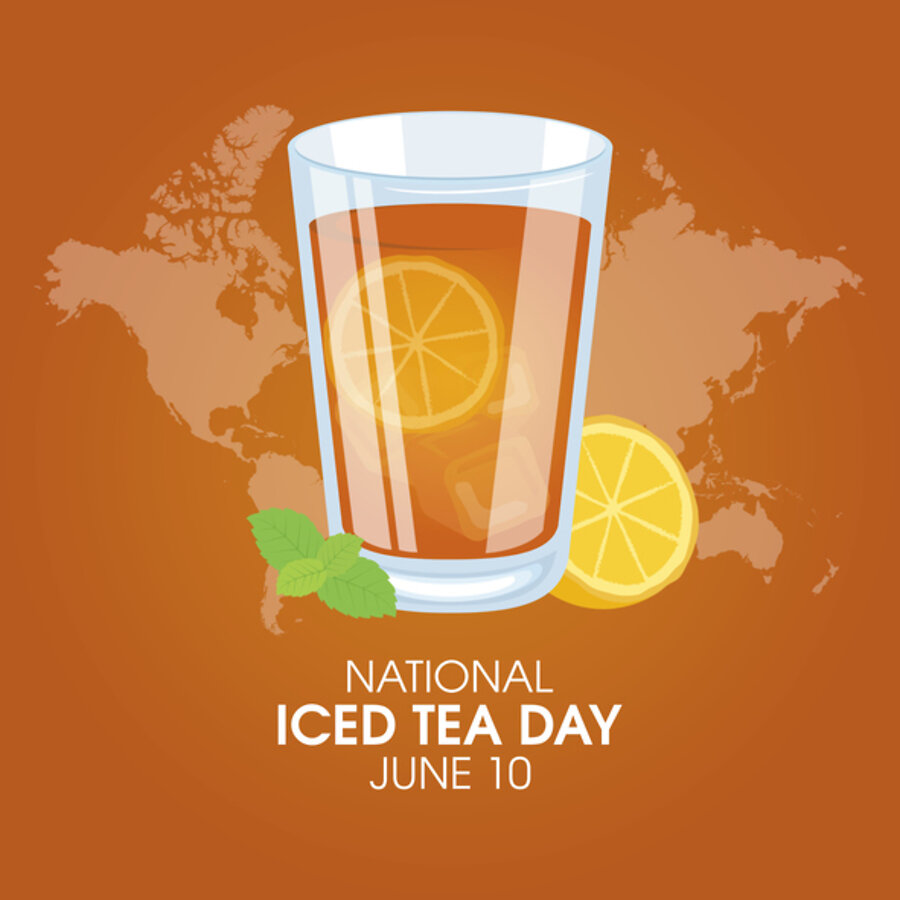SWEET TEA: THE REAL HOUSE WINE OF THE SOUTH
by Rob Lauer

Ice Tea. It's been called "The House Wine of the South." And now that the heat of May has settled on Hampton Roads, promising a long summer of high temperatures, ice tea will flow more freely than ever. Aside from a frosty beer, no drink soothes a sweaty brow like a glass of ice tea. "Do you want it sweet or unsweetened?" will be the query of Virginia waitresses and waiters whenever patrons order the beverage. That is a question one will not hear in the Northeast, Midwest, and West, where ice tea is usually served black-meaning unsweetened. While many Southerners still prefer sipping the refreshing beverage sans the sugar, Sweet Tea remains a popular, uniquely Southern delicacy. If ice tea truly is the South's house wine, then the vintage traditionally preferred is decidedly "wet."
While drinking tea originated in ancient Asia, adding teaspoons of sugar can be traced back to Great Britain, Senegal, and India. When in the 1700s, the cultivation of tea leaves took root in South Carolina, teaspoons were soon discarded as actual measuring devices for sugar, becoming primarily ornamental. The sweet tea for which Southerners developed a taste required cups of sugar.
Originally Southern-style sweet tea was made by dissolving cups of sugar in batches of boiling water in which green tea leaves were steeped. Once the water cooled and the leaves were removed, the sweet tea was ready to be served. Depending on the amount of sugar dissolved, the original sweet tea of the 18th and early 19th centuries could sometimes have a sticky quality-almost like a simple syrup. How were our Southern progenitors able to tolerate such sweetness? Simple! They cut it with alcohol-lots of alcohol.
Alcoholic "Green Tea Punches" were popular at that time among the British aristocracy, and wealthy Southern planters, eager to prove they were as cultured as their cousins "across the pound," began serving their version of the punches. Called "Planter's Punch," the beverage had a base of sweet green tea with a combination of pineapple and citrus juices and, by today's standards, near-lethal amounts of rum, whiskey, and bourbon. To make such a strong beverage drinkable, the ice tea used as its base had to be very sweet.
By the late 1820s, America's seemly insatiable love affair with "strong drink" began to cool as the Temperance Movement took root. A growing number of Americans began identifying as "Teetotalers," advocating the drinking of any beverage that wasn't alcoholic. Ice tea was at the top of that list; in the South, the preferred tea was sweet.
While South Carolina may be the home of American tea leaf cultivation, our Commonwealth played a role in the drink's history. The oldest known recipe for sweet iced tea was published in an 1879 cookbook entitled "Housekeeping in Old Virginia."
Until the early 1900s, ice tea was made from green rather than black tea leaves. Then, at the 1904 St. Louis World Fair, an Englishman named Richard Blechynden, selling hot black tea, realized that the summer heat was so intense no one was buying the drink. Running the tea through iced lead pipes, he served the complimentary iced beverage to people walking through the fair. This catapulted iced tea made from black tea leaves into a popular American summertime drink. Whether using black leaves or green leaves, Southerners still preferred their iced tea brewed with plenty of sugar.
By the dawn of the 21st Century, sweet tea had become such a staple of Southern cuisine that in 2003, a bill was introduced in Georgia, making it a misdemeanor for a restaurant to serve iced tea without offering sweet tea as an option.
The Shopper
1545 Crossways Blvd.
Chesapeake, VA 23320
757-317-5465
http://www.TheShopper.com

